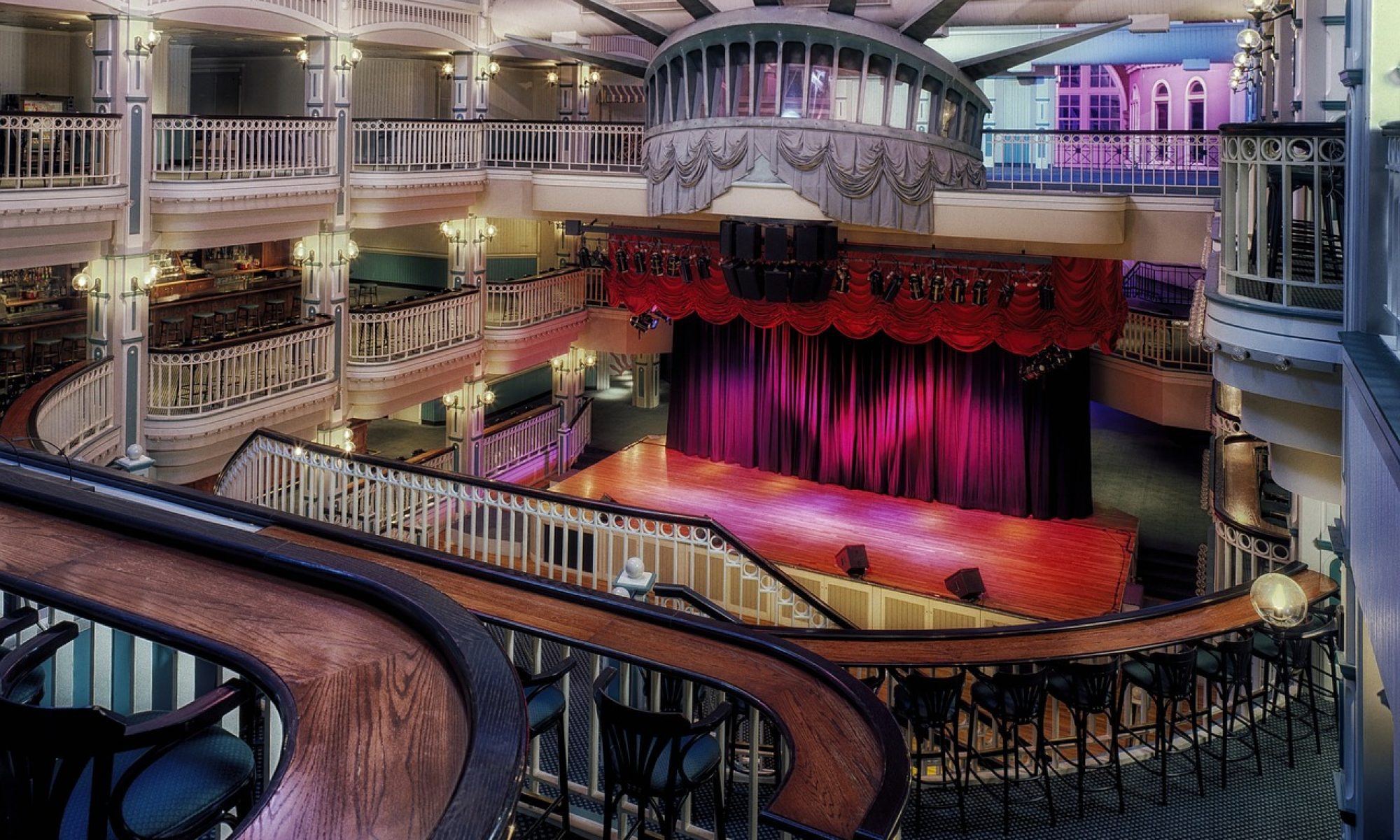Stage Terms
Stage: The platform on which actors perform.
Proscenium: The arch that separates the stage from the audience.
House: The audience side of the proscenium arch. Sometimes used to refer to the audience.
Wings: The areas of the stage off to the sides of the performance space. Usually hidden by curtains.
Orchestra Pit: The sunken area just in front of the stage where the musicians and conductor perform during a show.
Apron/Thrust: Area of the stage that extends out into the audience. Often covers the Orchestra Pit if no musicians are needed for a show.
Black Box: A smaller theater where the actors and audience are in the same room.
Stage Directions
Stage Right: The right side of the stage from the actor’s perspective.
Stage Left: The left side of the stage from actor’s perspective.
Upstage: The area of the stage farthest from the audience
Downstage: The area of the stage closest to the audience
Center Line: Imaginary line at the middle of the stage that runs from the front of the stage to the back.
Types of Stage Curtains
Front Settings: The furthest downstage, and usually most decorative, of the stage curtains. Usually made up of the Front Curtain and Main Valance.
Front Curtain: Large curtain that hangs farthest downstage (just behind the proscenium arch). Typically a bi-part track system, but sometimes a Lift, Venetian, or Braille system. Also called: Main Curtain, Grand Drape
Main Valance: Horizontal curtain that hangs farthest downstage (usually in front of the Front Curtain) and hides the ceiling and rigging materials from the audience.
Masking Curtains: The curtains behind the Front Settings that are used to hide areas of the stage from the audience. They are usually black and made up of Legs and Borders.
Legs: Tall and narrow curtains used to hide the wings (or sides) of the stage from the audience. Also called: Tormentors, Tabs, Vertical Masking
Borders: Similar to the Main Valance, Borders are used to hide the ceiling and rigging materials from the audience. Also called: Teasers, Valances, Horizontal Masking
Travelers: Similar to the Front Curtain, Travelers move along a track to open and close and allow the stage to be sectioned off. Also called: Act Curtains, Concert Curtains
Cyclorama: A large flat curtain that covers the rear wall of the stage and acts as a panel for lighting effects or painting. Also called: Cyc, Backdrop
Scrim: A large flat curtain with an open weave (similar to a net) that creates the illusion of a solid wall when lit from the front and appears transparent when lit from behind.
- Valance
- Front Curtain
- Legs
- Legs
- Rear Curtain
- Cyclorama
